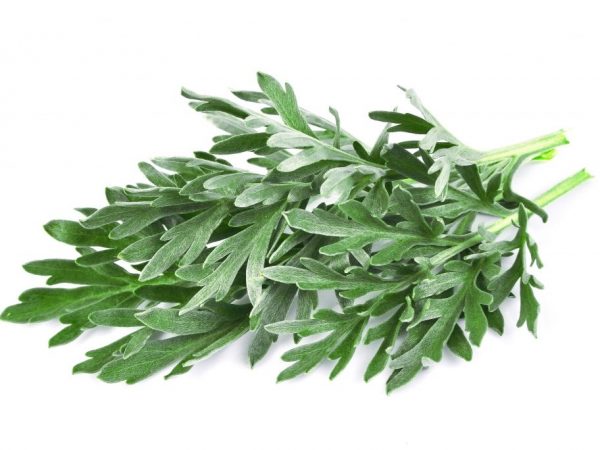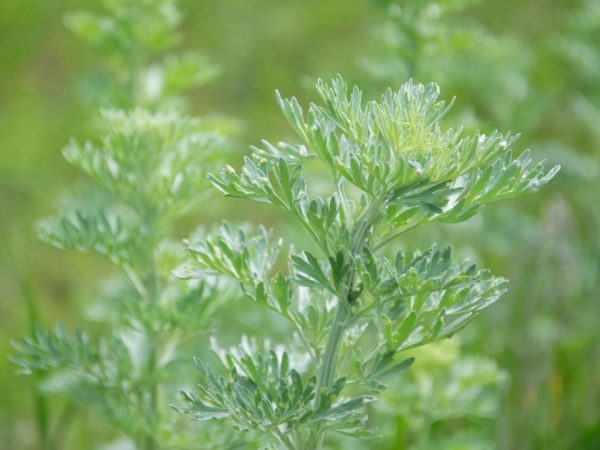How to treat an allergy to wormwood
The reputation of ragweed as an allergen is widely known, but there is an equally dangerous enemy of allergy sufferers - wormwood. As a weed, it is widespread and the likelihood that an allergy to wormwood will appear in patients with a reactive immune system, in children and pregnant women is very high
Wormwood (Artemisia vulgaris) causes seasonal pollinosis, hay fever and food allergies.

Allergy to wormwood
Signs
An allergy to wormwood can manifest itself after walking in the fresh air during the flowering period.
For the penetration of pollen into the mucous membranes of the eyes and nose or into the respiratory tract, it is enough to open a window, eat seasonal fruits and vegetables.
Symptoms of a wormwood pollen allergy:
- nasal congestion, profuse liquid discharge from the nasal passages;
- redness of the eyes, swelling of the eyelids, tearing;
- feelings of congestion in the throat, discomfort in the larynx;
- dermatological manifestations in the form of eczema, dermatitis;
- sneezing, coughing.
All this can be accompanied by fever, vomiting, nausea, diarrhea, general weakness, headache. Usually, such symptoms join if the allergy is of a mixed, cross-over nature. Children often have an increase in body temperature up to 37.5 ° C.
This allergoid herb blooms from July to September, so it is not easy to avoid contact with it and the symptoms can last for a very long time.
At the moment, it is known that bitter wormwood is the cause of seasonal allergies in 15% of cases.
Treatment methods
Treatment of allergy to wormwood (conjunctivitis, rhinitis, obstructive bronchitis, food intolerance) should be comprehensive.
This approach can lead to long-term remission or even complete cure of the disease. However, during treatment, you should strictly follow the instructions of doctors and follow a certain diet.
Symptomatic treatment
Symptomatic treatment is aimed at eliminating the manifestations of allergy to wormwood flowering. Therapy is carried out before the detection of the allergen or in the acute stage. To stop inflammation, the following drugs are used:
- Antihistamines - in the form of tablets by mouth, syrups or drops to relieve the general condition of the body when symptoms are aggravated. Such tablets block the release of allergy agents in the body, so they can remove all manifestations. However, such drugs have a number of side effects, it is not recommended to treat adolescents and children with them, they can cause addiction with prolonged use. Therefore, they are often used topically - in the form of drops in the nose, eyes, creams.
- Vasoconstrictor drops in the nose and eyes are designed to fight one of the most unpleasant manifestations - edema.
- Antiallergenic drugs with glucocorticoids. This group of drugs is used in severe cases, with bronchial asthma, hay fever, laryngeal edema. Dexamethasone in the form of eye drops, nasal sprays, injections, inhalations has proven itself positively.It is often found in ointments and creams for the treatment of allergic dermatitis.
These drugs are aimed at alleviating the patient's condition. Allergy to wormwood is treated with specific therapy in 70% of cases.
Specific ASIT therapy
Allergen specific immunotherapy is prescribed for confirmed allergy to wormwood pollen (when the grass is in bloom). This is done by conducting tests for pollen of weeds (primarily for ragweed).

Allergy is determined by analysis
The essence of ASIT is the introduction of microscopic doses into the body at a certain frequency, once a week or once every 10-14 days. Under the influence of manipulations, the immune system gets used to the presence of plant allergens and ceases to react sharply to its penetration into the body.
Treatment is started when the grass is not yet blooming - in winter or late autumn. The period ranges from several weeks to several months. A significant disadvantage of this method is the duration of treatment and the high cost of drugs.
Treatment of children and pregnant women
It is better for pregnant women and children with seasonal allergies to pollen to leave the area of mass flowering. This group of patients is characterized by an acute reaction.
It is possible to assume the presence of an allergy to wormwood in children if one of the parents has a history of it. In this case, the probability of developing an acute immune reaction in heirs reaches 70%.
If it is not possible to leave, you should adhere to these rules to reduce the risk:
- take medications only as agreed and prescribed by a doctor, strictly observing the dosage and treatment regimen;
- avoid walking in the morning when the concentration of pollen in the air is at its maximum;
- after being outside, be sure to take a shower, wash your hair and change your clothes;
- wear glasses outside to protect your eyes from the allergen;
- give preference to clothes made from natural fabrics;
- carry out wet cleaning daily;
- try not to open windows, install an air conditioner or an air purifier;
- avoid foods containing a potentially allergen - herbal teas, herbal tinctures, bath products for children.
Diet with a tendency to allergies
The diet should be gentle. The liver, as one of the main organs of cleansing the body from foreign substances, including allergens, requires a particularly careful attitude. Therefore, during the flowering season, you should limit the use of fried, fatty, spicy and smoked foods. Give up alcohol, muffins. The liver reacts positively to lactic acid products, cottage cheese, watermelons, linseed and olive oil.
The diet becomes more severe in the presence of cross-allergy to wormwood, when an acute immune reaction can be caused not only by proteins included in wormwood pollen, but similar proteins from other products.
The body can react to various nuts, honey, vegetable oils containing pollen residues, melons and seeds.
Conclusion
There is a belief that the allergy to wormwood is invincible and to get rid of the reaction to pollen when this plant blooms. However, it is only partly true. Thorough examination and timely treatment can defeat most diseases, including seasonal allergic reactions.



